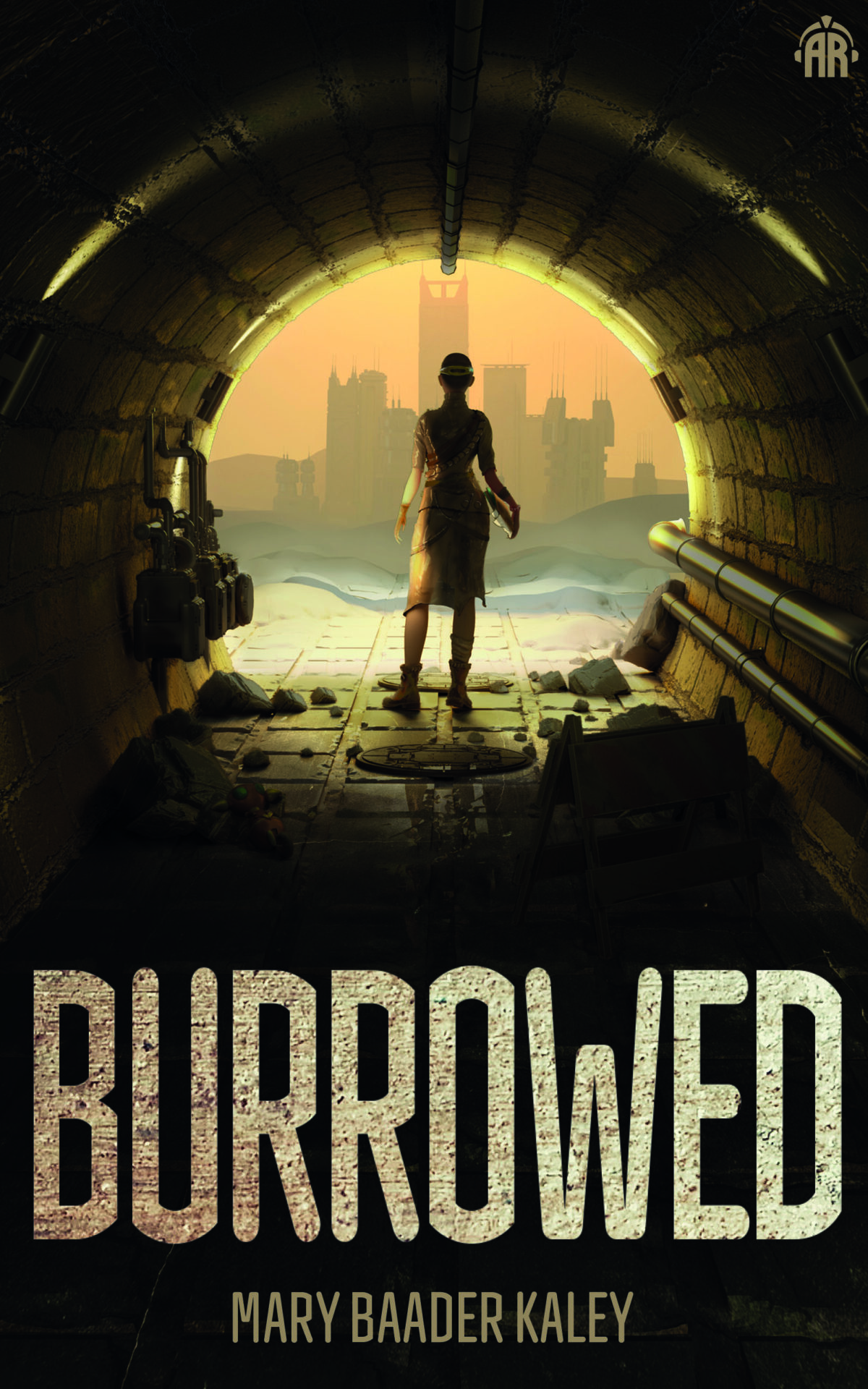
Mary Baader Kaley is joining us today to talk about her novel, Burrowed. Here’s the publisher’s description:
In the distant future, a genetic plague has separated humanity in two – Subterraneans who live in underground burrows to protect their health, and strong surface-dwelling Omniterraneans.
Zuzan Cayan, a brilliant Subter girl with “light blindness,” is about to leave the safety of her burrow and earn a living. With her low life expectancy, however, her options are slim. That is until she’s offered the chance of a lifetime to study the population’s broken genetic code, fix the divide and reunite the world once again.
But when a new virus turns fatal for the Omnits, Zuzan must find a cure or humanity won’t simply remain separate, it will become extinct.
With enemies on all sides, Zuzan must hold on to the light at the end of the tunnel – or risk the world falling into darkness.
What’s Mary’s favorite bit?

Mary Baader Kaley
Mines and subways may be some of the most boring underground structures in use today. But if you convert these structures into something else, well, then you have something intriguing. The underground world at the core of Burrowed is my most favorite bit among many favorite bits. Some readers of the story have asked intelligent questions about this world, and several questions about whether a subterranean world could possibly exist. How long would it take to build? How does anyone get air? How is it reinforced? What about flooding? How do people get enough vitamin D? I get it. It’s hard to imagine, and difficult to swallow. Honestly, I love these questions because it’s a fantastic opening to look at amazing structures all over the world already built underground. The more I researched, the more I realized how much our current and past subterranean communities completely blew my mind.
In Burrowed, it’s the weakest people who are forced to live underground, to isolate themselves from the sicknesses that threaten their survival at the surface. Above ground is associated with exposure to something dangerous. Maybe I’ve fixated on the notion that “underground” equates to safety because I grew up in the Midwest United States where tornadoes frequently sent us into our basements until the funnel clouds passed.
In ancient times, people went underground to escape the brutality of war, hiding from enemy attacks from clashing groups. Derinkuyu is a massive, multi-level underground city in Turkey dating back to circa 370 BCE that could house 20,000 or more people including their livestock for months at a time. The malleable rock in that region paired with a lack of water in the ground made it all possible. There’s an echo of this in Burrowed, where enemies attempt to raid and bomb the burrows.
The Mole People of New York City (among other major cities) have been studied for several decades now. These people carve out homes in nooks and crannies of abandoned subway tunnels, furnishing these areas with everything they need. Some even figure out how to string electricity down there. The tunnels provide them with shelter from the elements, a space to call their own, and perhaps freedom from the high cost of traditional housing.
Modern day Finland boasts an entire subterranean city underneath Helsinki, big enough for 900,000 citizens to be able to shelter for weeks in the case of a nuclear war. Thousands of individual bunkers are attached through an intricate tunnel system. Anyone who grew up in the height of the cold-war era may know someone who built their own personal bunker. It kind of makes me wonder why more of these types of underground communal safe houses don’t exist everywhere.
Canadians have an opportunity to escape their bitter winters by visiting their Underground City known as RESO, a multi-level and intricately tunneled area under Montreal. A half million people per day visit its shops, offices, theaters, universities, and residential units. Australians also have harsh weather to endure, so they’ve built “dugouts” underground to escape the extreme heat and dust storms in Coober Pedy. We don’t actually need an apocalyptic story to wait for people to burrow under the earth for cover—because people already are living, breathing, eating, and working there now.
Because the main characters in Burrowed work in underground laboratories, I can’t help but mention that numerous underground scientific facilities are currently in use, such as the Sanford Underground Research Facility in South Dakota, where experiments on things that can only be studied deep below the surface, like dark matter, are conducted.So when someone side-eyes me and questions where the theoretical first generation of Subterranean people in Burrowed’s history went to live, my answer is simple. They lived in the structures that already exist, expanding onto them over future generations. While I’d love to take credit for coming up with such a cool underground world, I can’t. But I can surely make it a favorite bit in my story.
LINKS:
BIO:
Mary Baader Kaley loves the sound of spring crickets, the Midwestern colors of fall, and shady porches in between. She spends summers healing her soul over long walks while smiling into the sun. On any given day, you’ll find her laughing with family and friends, binge-watching shows, reading while sneaking bites of chocolate, or warming her bones by a fire.
